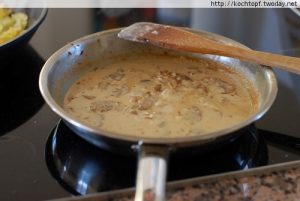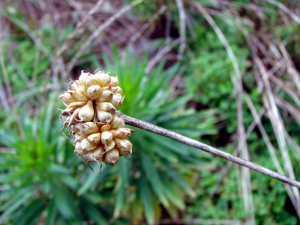Influences on Swiss Cuisine
By Savannah Middleton • April 27, 2018
In the German region of Switzerland, Zurchergeschnetzeltes, a dish commonly cooked in Swiss households, features tender strips of veal served in a creamy wine based sauce consisting of mushrooms and onions served over a bowl of rice. This dish has a very traditional German feel to it because it is heavy in meat and vegetables found regionally. There is also a slight French influence in the locally sourced wine sauce. This is just one example of a dish from Switzerland’s regions of cuisine. French, German, and Italian refugees from the World Wars transformed Swiss cuisine from mainly depending on other countries for their own food to becoming a self-sustainable cuisine. Today, Swiss cuisine focuses largely on regional distinctions and indigenous ingredients because of this transformation. In the past Swiss agriculture led to a lack in variety of ingredients available to use in their cuisine.

Due to Switzerland’s inability to grow a variety of agriculture and the advancement in Swiss transportation in the 1800’s has led to a reliance on the importation of their food. Agriculture is extremely difficult in Switzerland because of their soil and climate (“Switzerland- Agriculture”). The crops that are able to flourish in this difficult environment do not lend themselves to a wide variety of dishes. These crops are sugar beets, potatoes, wheat, apples, and grapes (“Switzerland-Agriculture”). Because of these limitations, the Swiss began looking for other means to add a variety to their cuisine. With the invention of steamboats and railroads the Swiss were able to begin to import a large variety of foods including canned goods. They relied heavily on this importation of food until the World Wars.
The shift from an import food culture to a localized one in Switzerland began with World War One. During the First World War, people begin to worry that there will not be enough food to sustain everyone living in Switzerland. This fright comes from Swiss reliance on food imports that were no longer being received during the war. This was just the beginning of Switzerland’s realization that becoming self-sustainable was essential to their survival.
This shift to a localized food economy continued during the Second World War. The isolation of Switzerland left the Swiss without access to the imported ingredients they had become so reliant on to give variety to their cuisine. This isolation led to the realization that relying on other counties for their food supply had been leaving them vulnerable in times of war and crisis. The Swiss began focusing on what they grew regionally to sustain themselves. This self-sustaining culture is still seen in Swiss cuisine today.
Due to Switzerland’s hardships during both World Wars, Swiss cuisine today focuses largely on ingredients that are easily accessible. Many dishes use ingredients such as potatoes and the meat from livestock found locally. The meats used in Swiss dishes vary widely from meal to meal. Veal, pork, and beef are commonly used in dishes, whereas fish is considered more of a treat and not seen commonly at an everyday meal. On the Food Culture and Traditions website the author states that “Swiss sausages are so varied and so popular that they probably represent the favored form of meat, and there is a type of sausage for every taste and use from mild to spicy, whether for snacking, picnicking, leisurely dining or light suppers”(“Swiss Foods”). Swiss sausage is a staple in many Swiss dishes throughout the different regions. In Swiss cooking, the natural flavors of the ingredients are the main focus of dishes. According to the Food Culture and Traditions Website “Overall, Swiss foods are well cooked and not strongly flavored” (“Swiss Foods”). Spices that are locally grown like basil, wild garlic, and oregano are commonly used among the different regions. These spices add flavor to the dish, without distracting from the dish’s natural flavors.

As a result of the refugees from the World Wars coming to Switzerland for safety, Switzerland’s cuisine is separated into different regions. These regions consist of French, German, and Italian. French influences on Switzerland’s cuisines are often seen in sauces. The German influence on Swiss cuisine emerges in dishes heavy in starches, like potatoes, and the meats. In the Italian region produces dishes very similar to traditional Italian cuisine with tomato sauces, pastas, and Italian cheeses. Each region of cuisine is a slight spin on what would be found traditionally in those cuisines and often the different regions cuisines are mixed together.
Some dishes mix these regions of cuisine together into one dish. Trout Filets à la Zug is an example of two of these regions coming together in one. There is a French feel to the filets of trout being served with a creamy white wine reduction sauce. The dish is served over wild rice which is a traditional means of serving a German Swiss dish. The two regions of cooking come together seamlessly to create one melded dish. Another dish that uses this same principle of collaborating the different regions of cuisines together is Italian Swiss steak. Italian Swiss steak uses traditional Italian ingredients like a tomato basil sauce and cheese, but uses large cuts of steak that would normally be seen in German Swiss dishes. These dishes are very specific to Switzerland and their people’s tastes.
One might ask why America does not have Swiss-specific restaurants, like the many Mexican, Italian, and Thai restaurants in every town. One reason that you don’t see Swiss-specific restaurants is because the cuisine varies so much according to region. This makes Swiss restaurants more of a challenge to create menus for. Seeing various country’s cuisines trend in the health food world leads one to think that there is certainly room for Swiss cuisine in America’s broad cuisine.
Works Cited
“Swiss Foods.” Food Culture and Tradition, 2017, http://www.food-links.com/swiss-foods/.
“Switzerland- Agriculture.” Nations Encyclopedia, 2018, http://www.nationsencyclopedia.com/economies/Europe/Switzerland-AGRICULTURE.html.
Recipe References
“Top 10 Swiss Foods – With Recipes.” Expatica, https://www.expatica.com/ch/about/Top-10-Swiss-foods-with-recipes_108667.html
“Trout Filets à la Zug.” MySwitzerland.com, https://www.myswitzerland.com/en-us/typically-swiss-recipes/trout-filets-a-la-zug.html
“Italian Swiss Steak Recipe.” Taste of Home, August 2002, https://www.tasteofhome.com/recipes/italian-swiss-steak